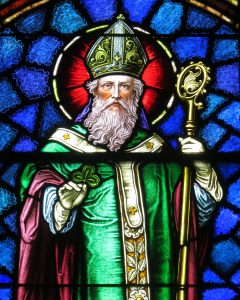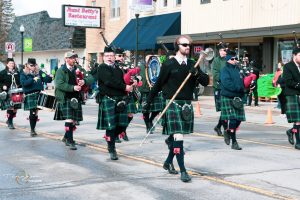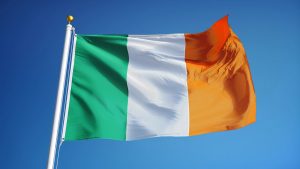A Celebration of St. Patrick
It’s that time of year again when we wear green, and cheer all things Irish. We ourselves will be marching in a number of parades. But who was this St. Patrick fellow, and why do we celebrate him?

Well, Saint Patrick, who lived during the fifth century, is the patron saint of Ireland and its national apostle. Born in Roman Britain, he was kidnapped and brought to Ireland as a slave at 16. He later escaped, but returned to Ireland and was credited with bringing Christianity to its people.
Since around the ninth or 10th century, people in Ireland have been observing the Roman Catholic feast day of St. Patrick on March 17. The first St. Patrick’s Day parade took place not in Ireland but in America. Records show that a St. Patrick’s Day parade was held on March 17, 1601 in a Spanish colony in what is now St. Augustine, Florida. The parade, and a St. Patrick’s Day celebrations a year earlier were organized by the Spanish Colony’s Irish vicar Ricardo Artur.
More than a century later, homesick Irish soldiers serving in the English military marched in New York City on March 17, 1772 to honor the Irish patron saint. Enthusiasm for the St. Patrick’s Day parades in New York City, Boston and other early American cities only grew from there.

In America, St. Patrick’s Day is recognized by shamrocks, leprechauns, parades, and all things green. Irish soldiers—often indentured servants—in the British Army brought the holiday to America as early as 1762 when the first St. Patrick’s day parade was held in New York City. As Irish immigration to America increased throughout the 19th and 20th centuries, the holiday evolved into the celebration of Irish pride that we observe today. However, in Ireland, there was a time when wearing the color green was punishable, as illustrated by the Irish nationalist ballad, “The Wearing of the Green.”
Ireland wasn’t always associated with the color green. Even though its lush hills would suggest otherwise, the Emerald Isle was actually once aligned with the color blue instead. When Henry the VIII claimed himself to be king of Ireland in the 1500s, his flag was blue, meaning that Ireland was also associated with the color. However, green was later used as the color of the flag in the Great Irish Rebellion of 1641 when the Irish fought against the English. Over the years, green became a national symbol of pride for Ireland. Wearing green clothes became common in the U.S. at St. Patrick’s Day parades and celebrations in the 1800s. It was a symbol that Irish-Americans used to honor their heritage and seems to have stuck all these years later.

The meal that became a St. Patrick’s Day staple across the country—corned beef and cabbage—was also an American innovation. While ham and cabbage was eaten in Ireland, corned beef proved a cheaper substitute for impoverished immigrants. McCormack says corned beef became a staple of Irish-Americans living in the slums of lower Manhattan who purchased leftover provisions from ships returning from the tea trade in China.
The three-leaf clover, a type of trefoil plant, has been considered the unofficial national flower of Ireland for centuries. Irish legend says that Saint Patrick used the shamrock as an educational symbol to explain the Holy Trinity to nonbelievers as he converted the Irish to Christianity in the fourth century. This folklore solidified in the public conscience in the centuries after Patrick’s death (which is presumed to have happened on March 17).
So, get your green ready, pin on your shamrock, and put that corned beef in the crock-pot. If you’re free you can join us in celebrating Ireland’s Patron Saint at the Pinckney St. Patrick’s Day, stepping off at noon on Saturday, and the Bay City St. Patrick’s Day Parade on Sunday, stepping off at 2pm.
